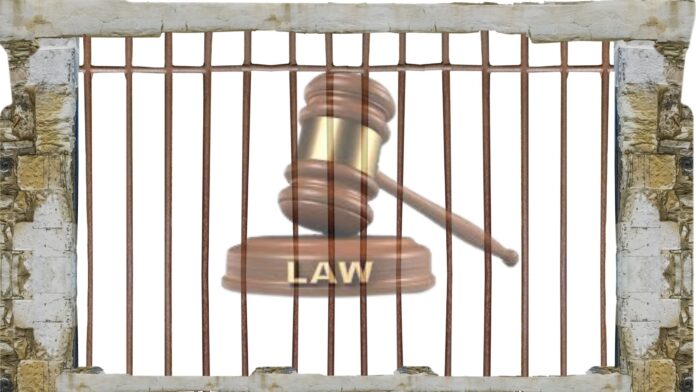Usually , when anyone quoth the word , law, it refers to the official rule of any country or state , which act as an invigilator, telling people that out of their all actions, which one is right or which one is wrong . But, the word, law is not confined to the above definition, it means much more than that. Law , not only refers to the set of rules, assumed by a state or country as correct , but it also refers to the set of rules and regulations adapted by any society, community, religious group , or any particular lingual group. Most of the time, people should abide by the law. But, in some situations, when you find that the law is not justifiable to you, you should just ignore it and go ahead with your plan.
For example, if you are hungry badly, then to save life stealing food may not be wrong . There are many cases, after which it gets automatically proven that sometimes law has to be broken.
Let us consider the case of civil rights movement , which happened in USA, to alleviate racial discrimination , which was based on an idiotic ideology of being black or white in body colour. Prior to the civil rights act, 1964, there was a law in the society of United states that, when travelling by bus, African- Americans either had to sit at the back of the bus or get up from their seat whenever a white person wished to sit. This dirty law of the society was broken apart, by an African- American lady , “Rosa Parks” , who was tired from a long day at work, so she refused to give up her seat on a bus to a white man on 1 December, 1955. Her refusal to the law of the society, gave birth to a huge agitation against the unequal ways in which African-Americans were treated. This agitation forced the biased government of USA to pass the Civil rights Act, 1964 , which prohibited the societal law of discrimination based on race. So, from this it becomes evident that not always the laws are true, sometimes they need to be broken.
The second example is of the prevailing custom of child marriage and sati pratha in the pre-independent India. During pre-independence , the society had accepted child marriage and sati pratha as a law. But, Raja Ram Mohan Roy came out of this societal cage and realised that this was absolutely incorrect. It takes away children’s childhood and makes widow’s life miserable. So, here also Raja Ram Mohan Roy came out of the law and broke it.
There are too many examples, which are evidence for the theme that why and when should the law be broken?. Even now, if anyone does not like to practise any deity and is willing to be an atheist. But , the societal law is to practise the God, then just put an iron rod on that law and go ahead for the thing you wish to be.
One of the mindset of the society was that girls have neither the capability nor the capacity , to pursue in technical fields . They are only fit for marriage, otherwise in educational and medicinal fields . But , this law of the society was broken apart by Kalpana Chawla and Sunita Williams.
Another prevailing law of the society was that if you are a girl , you should never do gymnastics or any physical sports. But, this law was also broken by Deepa Karmakar , Geeta Phogat and P.V Sindhu.
There is another law of our society, that girls can never run a business . But, this was proved incorrect by Falguni Nayar (Founder and CEO of Nykaa) and Vandana Luthra (Founder of VLCC) .
One of the dirtiest law of the society ,which blocks children’s mental growth is that the society pushes back children’s mind , if they point out something bad in the society. The society just ignores children’s correct concern , by saying that they are young and so are unable to judge , what is bad or good. But , this has also been proven to be wrong by Malala Yousafzai and Greta Thunberg.
The reason behind why and when should the law be broken? was even proven to be valid by the Indian constitution makers. Those who crafted the Indian constitution felt and knew that it has to be in accordance with the changes in society and its law. They did not see it as a sacred and unalterable law. So, they made provisions to incorporate changes from time to time . These changes came to be known as , “ Constitutional amendments”.
For example , in Indian Penal Code (IPC) murdering anybody is a punishable offence. Whereas , if the murderer does show in the desperate attempt to save himself from being killed by the other person , then it is not told that law is broken , rather it is seen as a murder in self-defence and it is not a crime or punishable offence. Under the parameters of any law of any country , such kind of scope is prevalent .
Earlier, girls could not give National Defence Academy (NDA) exam and could only give CDS. But , in 2021 , the supreme court (SC) passed an interim order granting girls to give NDA, and also established many Sainik schools for girls .
From all this real- life examples , we can easily without pressurising our brain much , conclude that sometimes to break the law is valid, if we find it unjustifiable to us .
Sometimes , we get confused by societal practice , customs and societal rules as law. Whereas , a law is that part of the rule , which is widely accepted across the length and breadth of the broader society. So, there are many prejudices in our society , which we misconceive as law . We should get away from the so called parochial laws , accepted only to a particular society , particular religion or a particular linguistic group and we should be positivistic and the law which is having an empirical evidence.
By: Nayanika Prusty
Write and Win: Participate in Creative writing Contest and win fabulous prizes.















